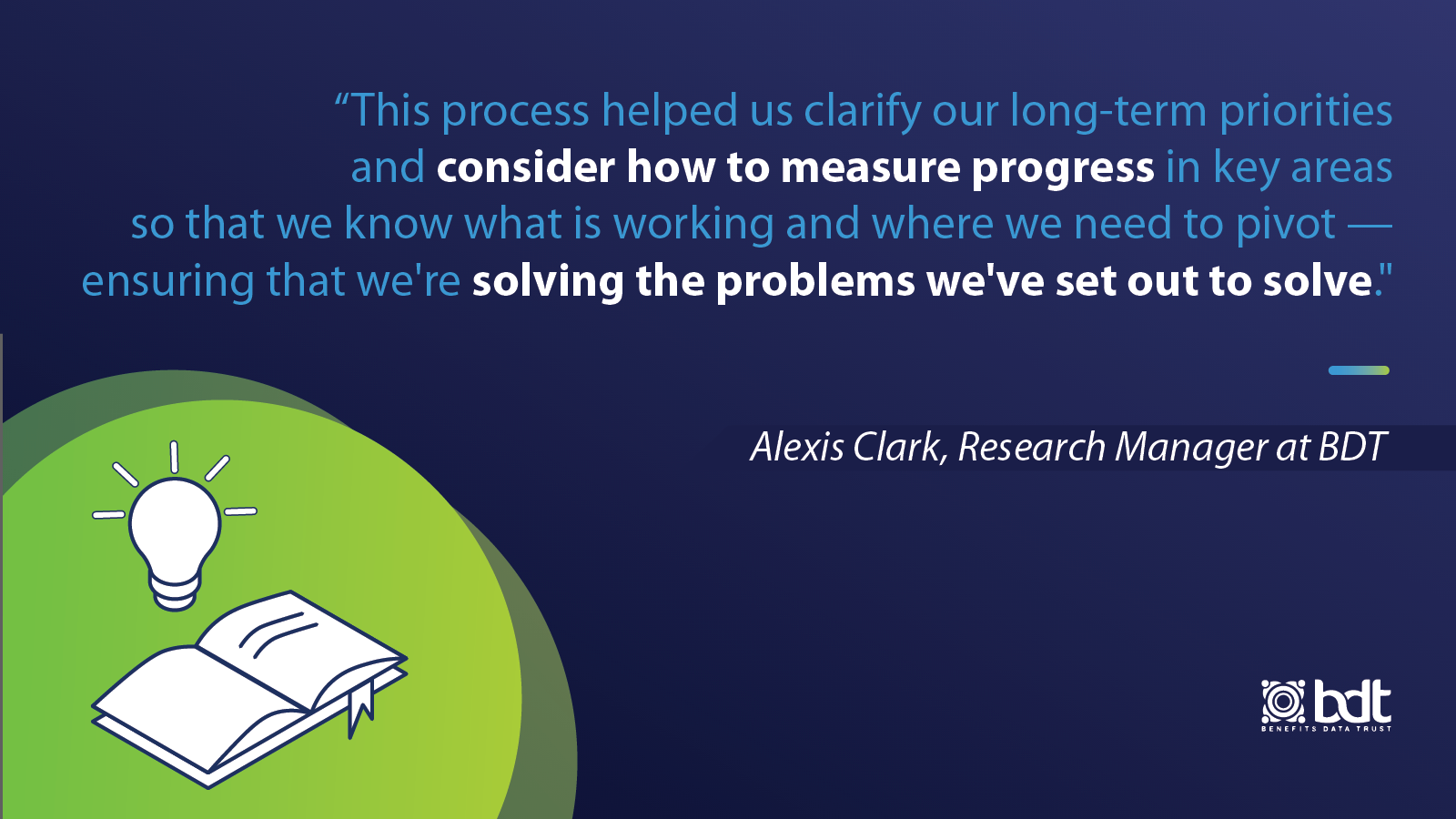
As a mission-driven nonprofit, every facet of our work at Benefits Data Trust (BDT) centers around our north star: to connect people to assistance so they can live better lives today, while modernizing benefits access nationwide to help even more people tomorrow. In the last few years, our organization has evolved — we've increased our staff and launched new initiatives to build on the more than $9 billion in benefits that BDT has helped eligible individuals and families secure since our founding in 2005. This growth is enabling us to reach our goals and also set new ones — including a commitment to streamlining access for millions of people so they can live healthier, more financially stable lives. This prompted our need to revise and update some of our fundamental planning tools — like our theory of change.
For many nonprofits, a theory of change is a critical foundation that informs strategic growth, determines resource allocation, and helps internal teams, partners, and key stakeholders understand the path forward. Simply put, it builds a bridge between a nonprofit’s mission and the strategies implemented to achieve it.
Much has changed since we crafted our first theory of change. We wanted to develop something that better conveyed the breadth and depth of our work today, while clarifying our vision for the road ahead. A strong theory of change is meaningful, plausible, doable, and testable — with that in mind, and with support from an external advisor funded through The Pew Charitable Trusts' Evaluation Capacity Building Initiative, we assembled an internal team of cross-functional contributors to re-envision ours. Through six months of planning, data collection, and conversations with internal and external stakeholders, the core team developed and delivered our improved product.

BDT’s new theory of change and the strategies and outcomes encompassed within it are driven by the problems that we are trying to solve — real world problems that plague families across the country every day:
- More than 1 in 10 Americans live in poverty;
- More than $60 billion in benefits are left on the table each year; and
- More than 9 million Americans qualify for one or more public benefit programs but are not enrolled in any assistance.
In order to work to solve these problems, we have identified the following strategies:
- Proactively help people enroll in benefits;
- Equip other sectors to connect people to assistance;
- Help government make reforms to streamline access to assistance; and
- Increase solutions to improve access to assistance.
Through these strategies we aim to achieve our intended impact:
- Ensure eligible individuals and families receive dignified and efficient assistance to pay for food, healthcare, and other critical needs
Our mission is to help people live healthier, more independent lives by creating smarter ways to access essential benefits and services. Behind all our work, and the core of our mission, is our bottom-line goal: to improve health, promote equity, and build pathways to economic mobility. This new theory of change provides not only our staff, but our supporters, partners, and peers, with a clearer vision of how we plan to do just that.
By serving people better today and creating a better system for tomorrow, we aim to reduce hunger and poverty for families nationwide. We hope you read our theory of change narrative to learn more about the root of the problems we’re addressing, how we intend to concretely work toward and achieve our impact, the outcomes that we hope to see along the way, and the strides we’ve made to date.
This blog was jointly authored by three BDT staffers: Lisa Dillman, Associate Director of Research; Alexis Clark, Research Manager; and Heather Benninghoven, Strategy Analyst.
